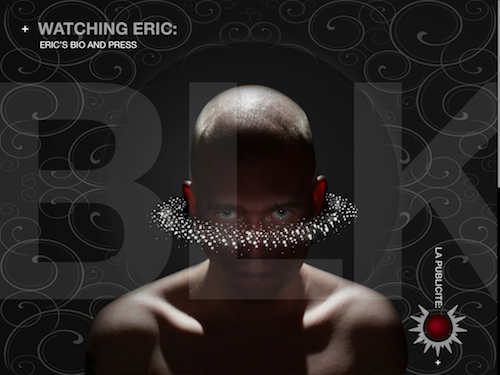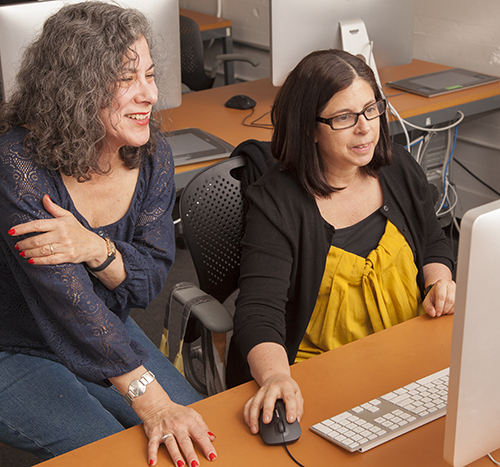
An immersive and provocative IPad experience designed by Pacific Life Insurance Senior Designer Terry Scott
Successful business owners know that the only way to reach target customers is to find them where they live. Digitally that is. Above all, this means speaking to consumers with content tailored to the platform of their choice. Just ask Pacific Life Insurance in Newport Beach. After the firm’s Senior Designer Terry Scott completed an iPad class through Art Center at Night, he convinced Pacific Life’s leadership to enroll the entire design team in the same class the next term so they are equipped with the latest developments in iPad design in preparation for the the company’s upcoming migration from print to tablet-based promotional materials.
Businesses and organizations are increasingly relying on iPad friendly formats to produce magazines, brochures and other key business tools. With 200 million iPads in circulation, the switch is vital to stay relevant to our evolving culture of visual learners.
Carla Barr has been Art Center’s expert faculty member on all things iPad since the introduction of the popular device in 2010. Barr’s Art Center at Night class is geared towards designers with established careers who are either interested in learning new technology or need to boost their skill set for their current gig. Her course covers three complex steps: concept, design and interactive build.

AC@N instructor Carla Barr works with an iPad design student
Every Wednesday night for 14 weeks, Scott and his team of five coworkers battled traffic-clogged freeways en route from their Newport Beach offices to a classroom at Art Center’s South Campus. During the course, each student made an original publication using Adobe Digital Publishing Suite, some added elements using HTML, Adobe After Effects and Edge Animate.
“We’re thrilled to help businesses achieve their strategic goals especially as the creative economy becomes more competitive,” said Dana L. Walker, managing director, Public Programs and director, Art Center at Night. “I honestly feel Art Center at Night is a kind of secret sauce for companies who are striving to keep on top of the intersection of design solutions and the constantly evolving technology being used by consumers.”
When the final presentation rolled around, three executives from Pacific Life came to check out the results of their investment. After many weeks of hard work and dedication by the team, the top brass were impressed with the inventiveness exhibited by their designers as well as in some surprising new projects.
In the early iPad days, Barr’s students designed magazines. However, as magazines became commercially available on the device, corporations eventually started to use the iPad as well. Architectural and real estate firms use the Apple device in the field. And corporations such as insurance businesses are now beginning to deploy them internally as well as with clients.
As the tech has evolved, Barr demands a more immersive and provocative experience from her students. “When people come to my class, it’s necessary to make something different from their daily work,” she says. “They need to push freely as far as possible using the tools that are available to make interactive, moving projects that will allow them to go back to work and be just as active regardless of the vibe. The project, ideally, provides them with the ideas and skills, to push the boundaries that are, naturally, imposed in the workplace. School projects are about creative freedom, the workplace benefits from that thinking.”
In the class, Barr covers narratives for the future by exploring user experiences, environments and information. She presents the iPad as a design opportunity for professionals during a fascinating digital era. She encourages her students to see this opportunity as a chance to design better and with more innovation. A chance to go beyond what magazines and newspapers are doing with tablets as they tell stories and create experiences. Interactivity, motion and sound opportunities are utilized to create successful environments on the iPad.
Students walk away with experience designing essential elements of the iPad such as interactivity, movement and sound; a grid for repeated use; selection of typographic style, color palettes and visuals to create an environment, both still and motion. They also take a deep dive into the balance and dynamics of a page and practice approaches to sequential design, using display and text type, photographs and/or illustrations, film/video and information graphics.
Along with Pacific Life Insurance, Boeing, UCLA, NASA’s Jet Propulsion Laboratory, United Technologies, Americorps, Occidental College and the Glendale Unified School District are just a handful of the companies and organizations that have turned to Art Center when they need their teams to learn the latest skills from the most respected experts.
To see the spring class offerings, visit Art Center at Night.









Nice info.. Thank you